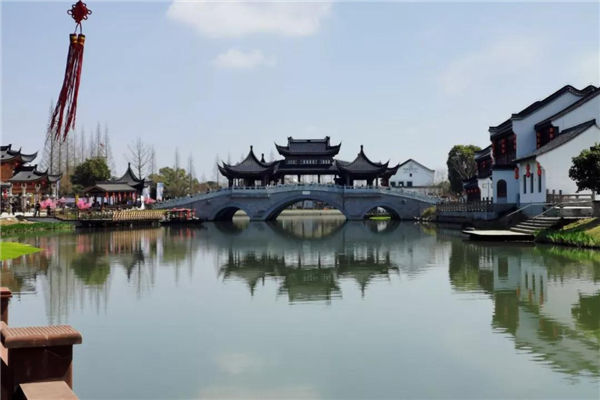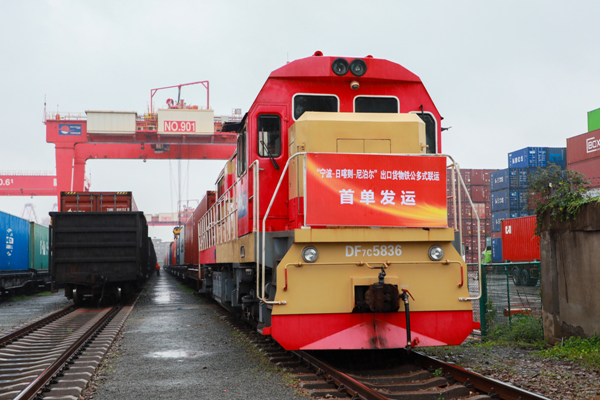Port sees 62.2% increase in sea-rail transportation

Freight trains loaded with containers stop in Ningbo, East China's Zhejiang province. [Photo/cnnb.com.cn]
A total of 227,500 twenty-foot equivalent units (TEUs) had been shipped via the sea-rail combined transport model at Ningbo Zhoushan Port in the first two months of this year, a year-on-year uptick of 62.2 percent, official statistics show.
The sea-rail combined transport model refers to the mechanism where goods are first loaded onto trains to Ningbo before being transported overseas by sea, and vice versa.
The shift to using freight trains instead of trucks to transport goods to ports has slashed logistics costs for enterprises located in nation's inland cities, according to an official at Ningbo Customs.
In addition, freight trains are more environmentally friendly as they consume only 25 percent the amount of fuel required for trucks.
From 2009 to 2021, Ningbo handled 4.806 million TEUs via the sea-rail combined transport model, which reduced carbon emissions by 1.62 million metric tons.
The city recently set the goal of handling 1.4 million TEUs via this transport model this year, up 16 percent year-on-year.
To date, Ningbo's sea-rail combined transport business covers 61 prefecture-level cities in 16 provinces, municipalities, and autonomous regions across the nation.

 China makes outstanding contributions to global energy transition
China makes outstanding contributions to global energy transition  Ningbo village inspires Malawi official
Ningbo village inspires Malawi official  A look at China's economic data in the first three quarters of 2024
A look at China's economic data in the first three quarters of 2024 


